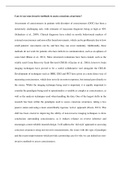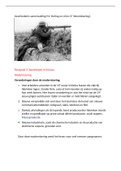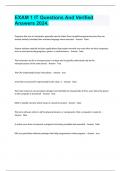Can we use non-invasive methods to assess conscious awareness?
Assessment of consciousness in patients with disorders of consciousness (DOC) has been a
notoriously challenging task, with estimates of inaccurate diagnoses being as high as 40%
(Schnakers et al., 2009). Clinical diagnoses have relied on mostly behavioural markers of
external consciousness and non-reflex based movements, which can be problematic due to how
small patients’ movements can be, and how they can occur randomly. Additionally, these
methods do not work for patients who have deficits in communication, such as an aphasia of
some kind (Bruno et al., 2011). More structured evaluations have been created, such as the
widely used Coma Recovery Scale Revised (CRS-R) (Giacino et al., 2004), however, brain
imaging techniques have proved to be a useful collaborative tool alongside the CRS-R.
Development of techniques such as fMRI, EEG and PET have given us a more direct way of
measuring consciousness, which does not rely on motor responses, but instead goes directly to
the source. Whilst the imaging technique being used is important, it is equally important to
consider the paradigms being used to operationalise a variable as complex as consciousness, as
well as the analysis techniques used when handling the data. One of the largest shifts in the
research has been within the paradigms used to assess conscious awareness, taking a less
passive stance and using a more scientifically rigorous ‘active’ approach (Owen, 2013). This
shift has been crucial in improving the ability of non-invasive imaging techniques to draw
conclusions surrounding consciousness, as it reduces reliance on reverse inference and
encourages a more reliable research design. I will address the ‘old style’ approach to assessing
conscious awareness using non-invasive measurements, the issues with this type of paradigm
and the recent improvements which provide a promising case for why we can indeed use non-
invasive methods to assess consciousness.
, In terms of the so-called “paradigmatic shift” (Owen, 2013) in assessing conscious awareness,
the initial approach that was more passive and reliant on reverse inference is demonstrated by
Owen et al., (2006). Their study caused a stir within the research community due to the bold
conclusions that they drew using fMRI. They conducted two studies upon a 23-year old
vegetative subject; first assessing speech-specific activation in the brain, and finding activation
similar to healthy controls in response to speech and ambiguous words (e.g: creak). The second
study supposedly assessed instruction comprehension, and conscious awareness. They
instructed her to do two mental imaging tasks, and for both conditions, the brain activation
measured by the fMRI was indistinct from the controls. Based on this, they concluded that it
showed “clear intention” on the subject’s part and claimed this was evidence of conscious
awareness “beyond a reasonable doubt”. Since this paper, there has been a number of
comments about the study’s validity in terms of the conclusions drawn. Greenberg et al., (2007)
raised the important question of whether the activation was caused by the final word of the
stimulus sentence, as many psychological processes, including semantic ones, happen
automatically. An important example of this is the ‘cocktail party effect’ (Bronkhorst, 2015)
whereby we can recognise our name being spoken despite paying attention to other auditory
stimuli, demonstrating the unconscious response elicited by hearing our own name. It is
therefore surprising that using a patient’s own name was, and still is, a popular paradigm used
for this type of study (Owen, 2013). Furthermore, Monti et al., (2010) produced a follow up
study that only found that 17% of vegetative patients tested showed similar activations found
by Owen et al (2006).
Other studies that employed similar ‘passive’ methodologies include Machado et al., (2007),
who measured the difference between event-related fMRI activations in vegetative patients and
minimally conscious patients in response to their own name being spoken by a familiar voice.






